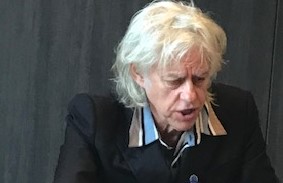Technology conferences have a ton of buzzwords, but two stood out at this year’s Unleash in Paris last month. These were “journey” (digital, employee, candidate) and “experience” (people, talent, employee, HR, brand.) The conversations also focused on the constant shift in workplace relationships between employer and employee which have led to the creation of a new and sometimes uneasy employment alliance which at times does not always run smoothly. Mainly unwritten, the new arrangement suggests that talent is increasingly more of an individual asset than an enterprise asset. There was much discussion what that meant for all involved.
Career disruption
The notion of a traditional lifelong career where employee loyalty was at one time a given has gone. The need to manage constant change has brought about a shift to lean and more agile organisations. This has had significant impact on employment arrangements. The gig economy now includes 33% of all workers in the US. The notion of a linear career has now been replaced by portfolio and portable careers. Working lives have become more diverse and more diffused, requiring new sets of skills as we prepare for jobs that may not even exist yet. When companies no longer guarantee a job for life, or even medium term, the only real constant is therefore the individual.
Not a new concept
The concept of Brand You is not new. Tom Peters coined the phrase in the 1990s. Today it has greater significance because in talent acquisition finding people with the right skills is getting increasingly difficult, and retaining them more so. Today, if employees don’t have the right “experience” of an organisation, or make a meaningful “journey” they become disengaged, and under productive, or the best simply walk.
But this makes the new employment alliance somewhat tenuous, leading to perhaps not wars for talent, but certainly skirmishes. Today, people are more willing to move between jobs and organisations, especially now they have personally invested in their own development and have been encouraged to do so by their own bosses.
After a decade of low productivity and high employment, where does that leave the organisation?
Some businesses are struggling to manage this new arrangement with their employees and to align frequently conflicting needs. Part of that is centred around expectations of what organisations are going to do for the employee and what the employee has to do for themselves. The other piece of this new yet to be clarified contract, is whether the organisation has a role to guarantee the future employability of an employee when their temporary alliance is over.
Purpose, learning, and soft skills
From an individual perspective, Heather E McGowan, future of work strategist, talked about learning and adapting in a world which is changing exponentially. She encouraged us to define ourselves less by what we do (our jobs) and more by why we do it. Our purpose. The valued skills of the future will be soft skills – as identified by the recent data from the World Economic Forum. These include creativity, people management, emotional intelligence and service orientation to name but four.
But more than that, being committed to growth and continuous learning is vital to maintaining our own relevance, employability and long-term economic viability. McGowan added ” Learning is a new pension. It is the new way that you create a future value every day.”
Luigi Maria Fierro Global Head of HR Strategy and Transformation at ING advocated that organisations have to accept that the purpose of the individual employee and the organisation will provide a temporary alliance only, before an organic shift happens and they move on. He emphasised that we need to “make a connection between purpose and day-to-day work more clear and effective ”
When alliances don’t work
But there are some other problems with temporary alliances referenced by Sir Bob Geldorf in his key-note ‘When leaders fail to lead, the people teach them to follow….and that ain’t necessarily a good thing.’ He warned of the downsides of productising human experience with concerns about the dystopian dangers of change without purpose. This was especially true when employer and employee values are in conflict. We are seeing this today as Facebook employees reject the company’s leadership policy in relation to fake news ads. We also saw it at Nike when a revolt by women employees saw an exodus of senior men.
Technology as a solution
At a Tech conference for HR, technological solutions were obviously touted as the way forward for every kind of journey and experience listed above. It was equally clear that many HR practitioners believed that technology could not provide all the solutions and at some point HR needed to get back to the basics. Whether on the main stage, the breakout rooms or the smaller platforms of the event, the message was consistent.
Communication, “air listening” and “eye brilliance”
In the session “The Evolving Role of the CHRO” led by Lars Schmidt, Laurent Choain, Chief People Officer at Mazars had a lovely line “one hour spent in the hour in the office, is an hour too long.” He encouraged CHROs to get out to meet and talk to employees, even suggesting that CEOs should be involved in interviewing for roles not destined for the C-Suite. More talking in person. But with global and remote teams that can also be a challenge.
Erin Meyer author of the Culture Map Cultural tackled cultural miscommunication frequently at the heart of misunderstanding in our international organisations. She opened our eyes to how developing cultural sensitivity can impact effective collaboration within teams which span linguistic, national and ethnic differences. I loved the idea of “listening to the air” around a person, pausing and looking for a “brilliance in someone’s eyes.” Another low-cost solution.
Geldorf also doubted that technology has all the answers. He felt certain that one person today could not achieve the same level of global impact as he did when 40% of the world population watched Live Aid in the ’80s. The technology of today’s multiple media platforms means that in 2019 if you miss something there are dozens of ways to catch up. Not so back then.
Wider cultural context
I am old enough to have watched Live Aid on the day where Bob Geldorf impacted the world in his campaign against feminine in Ethiopia, raising $125 million. Today he is calling for more simple rather than tech solutions. Address basic global inequalities. “…change the world for the better and make a difference with a sense of purpose, not just look to leaders in politics, companies…”
In a media briefing meeting I asked him how can a new generation make an impact? His advice to today’s 19 and 20 year olds to make that kind difference was pretty basic. “Read a book and talk to each other in a meaningful way” to build relationships.
Nothing complicated.
If you need to attract top talent – get in touch






